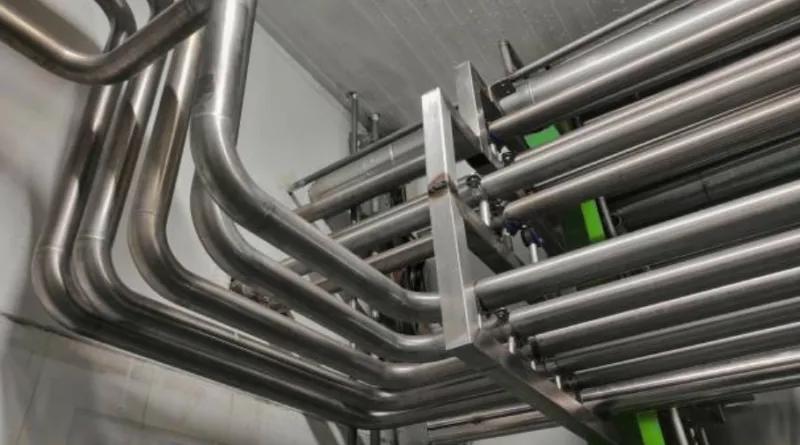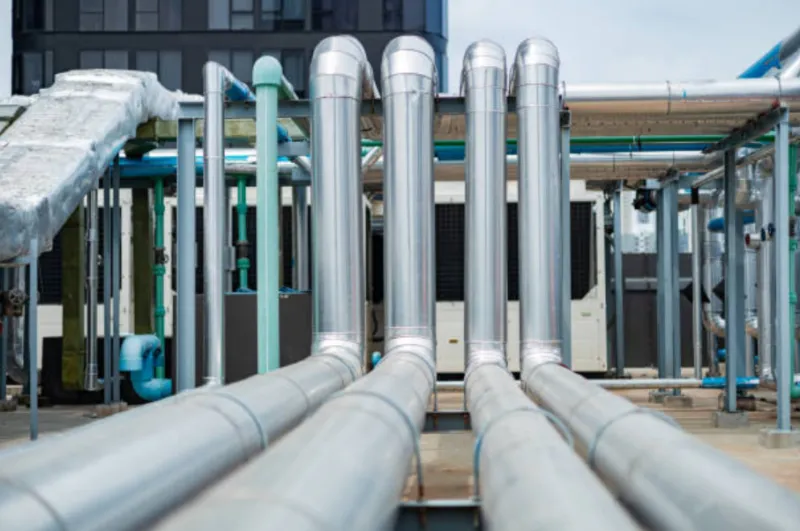Fire-Rated Pipe Insulation Explained
How to Handle Pipe Expansion and Contraction in Mechanical Systems

Thermal shifts in mechanical systems can lead to complex challenges when movement goes unmanaged. Engineers and contractors must account for dimensional change across every section of piping—from risers to long horizontal runs. Addressing pipe expansion effectively from the start helps prevent service disruptions and mechanical failure down the line.
Why Thermal Movement Demands Early Attention
Thermal movement in piping systems can’t be ignored once the system is in operation. As temperatures fluctuate, materials lengthen and contract at predictable but often significant rates. The results aren’t always immediate, but they accumulate over time in the form of stress fractures, joint failures, and insulation breakdown.
Pipe expansion is a predictable physical response to heat. When materials like copper, steel, or PVC are exposed to temperature increases, their structure elongates. The reverse occurs when cooling sets in. Each cycle places alternating stress on fittings, restraints, and insulation seams that weren’t designed with sufficient flexibility.
Calculating Movement Before It Creates a Problem
Engineers rely on well-established formulas to calculate pipe expansion and contraction before installation begins. The standard formula—ΔL = α × L × ΔT—allows project teams to estimate total movement based on material behavior, pipe length, and temperature differential. For example, a 50°F increase can cause a 100-foot CPVC line to expand nearly two inches, which must be absorbed without stressing insulation seams or anchor points.
Thermal shifts of this scale can compromise system integrity if not properly accounted for. They affect joint design, hanger spacing, and long-term material performance in ways that can’t be corrected after the fact.
Incorporating Flexibility into System Layouts

Designers use loops or directional offsets to give the line room to shift under heat stress. Where space is tight, flexible joints provide a compact method for absorbing movement in controlled ways. Choosing between these options depends on layout constraints, system length, and expected temperature range.
Anchors and guides work together to control the direction of movement and isolate thermal shifts to specific areas. Anchors hold the line at strategic points, while guides allow it to move along a single axis. On rooftop systems, even minor contact with masonry can crack insulation layers—making targeted restraint important to long-term success.
Material Behavior and Field Conditions
Different materials react in different ways. CPVC and HDPE show significantly more movement than stainless steel or copper. Engineers weigh material coefficients against field conditions like exposure, line length, and installation environment. Choosing a pipe material based only on cost or availability can backfire without evaluating thermal properties and expansion tolerances.
Thermal movement needs to be addressed during initial system planning to prevent future displacement and support failures. A small oversight, like placing two anchors too close together, can lock in stress that weakens over time. Addressing flexibility upfront prevents retrofits, warranty claims, and ongoing service disruptions.
Stress Points That Develop Slowly Over Time
Thermal movement doesn't end after installation—it evolves with the system. As operating conditions shift and materials respond to ambient cycles, new stress points can form at elbows, penetrations, and fixed supports. These areas may not show immediate signs of wear, but subtle misalignments can lead to insulation breakdown or gasket fatigue over time.
Targeted field checks help teams catch these changes early. Common indicators include shifted brackets, compressed insulation, and signs of abrasion where guides or anchors are overloaded. Proactive monitoring allows contractors to correct alignment before it leads to systemic issues.
Industry Codes and On-Site Realities

Most mechanical codes require thermal flexibility to be built into piping layouts. Engineers typically follow accepted expansion formulas and product guidelines, but on-site conditions often introduce unexpected challenges. Systems routed through tight shafts, across varied materials, or near vibration sources need more than standard plans.
Designs must account for temperature gradients that vary across a single line. A chilled water pipe entering a mechanical room may experience radically different conditions from the portion running across a hot attic. Supporting thermal movement means designing for the worst-case scenario—not the average.
Long-Term System Reliability Begins at Layout
When details like alignment and stress allowances are built in from the start, piping systems deliver performance that lasts across cycles, climates, and code updates. Attention to hangers, brackets, and saddles isn’t cosmetic—it determines whether insulation remains intact and whether joints resist fatigue. Well-supported systems are also easier to maintain and inspect.
Contractors who integrate flexibility into their design reduce callbacks and avoid emergency repairs. Owners and facilities teams benefit from longer intervals between replacements and fewer disruptions to daily operations. Field teams gain confidence knowing that each component contributes to a larger movement-tolerant strategy.
Leveraging Buckaroos Solutions for Thermal Movement Challenges
Thermal movement control depends on purpose-built hardware that maintains system alignment and protects insulation over time.
CoolDry™ Sliding Saddles for Controlled Pipe Movement
Buckaroos designs pipe support systems that help mechanical contractors manage thermal movement without compromising insulation integrity. One standout solution is the CoolDry™ Sliding Saddle, engineered specifically to allow axial movement while maintaining consistent insulation coverage. These saddles reduce friction between the pipe and its support system, which helps absorb expansion and contraction stresses across chilled water, steam, or hot water lines.
Roundup Plus™ Saddles for Structural Support and Insulation Integrity
For applications requiring fixed support and load distribution without damaging the insulation layer, the Roundup Plus™ Saddle offers another proven option. Manufactured with G-90 galvanized steel, it delivers high-strength support while ensuring a continuous insulation envelope—critical for energy performance and moisture control.
Additional Options for Diverse System Requirements
Both of these solutions are compatible with a range of insulation thicknesses and system types, making them versatile choices for HVAC, process piping, and hydronic loops. Contractors can install them with confidence knowing they’ll maintain alignment, reduce long-term fatigue, and help systems pass inspection without rework. Buckaroos also offers insulation protection shields for specialty conditions, each designed to solve real-world installation challenges where thermal movement must be controlled without system compromise.
Build Confidence into Your Design with Buckaroos Pipe Expansion Solutions
System performance depends on smart layout decisions and the right support hardware from the start. Buckaroos provides high-quality components that help manage pipe expansion effectively across demanding environments. Contact us today for more information.

Carrie Powers
Carrie channels her passion for innovative solutions in the construction industry for Buckaroos. With a deep understanding of Buckaroos' leading insulated pipe support systems and insulation protection shields, Carrie ensures that building owners, engineers, and installers are well-equipped with the best tools and products. Her dedication to digital transformation and customer engagement helps Buckaroos maintain its reputation as a trusted resource for professional insulators across North America and Canada.
Featured articles
Industrial Pipe Hangers and Supports
Steam Pipe Insulation 101: Materials and Supports
8 Types of Pipe Supports and Their Features
Understanding Industrial Pipe Insulation and the Options




